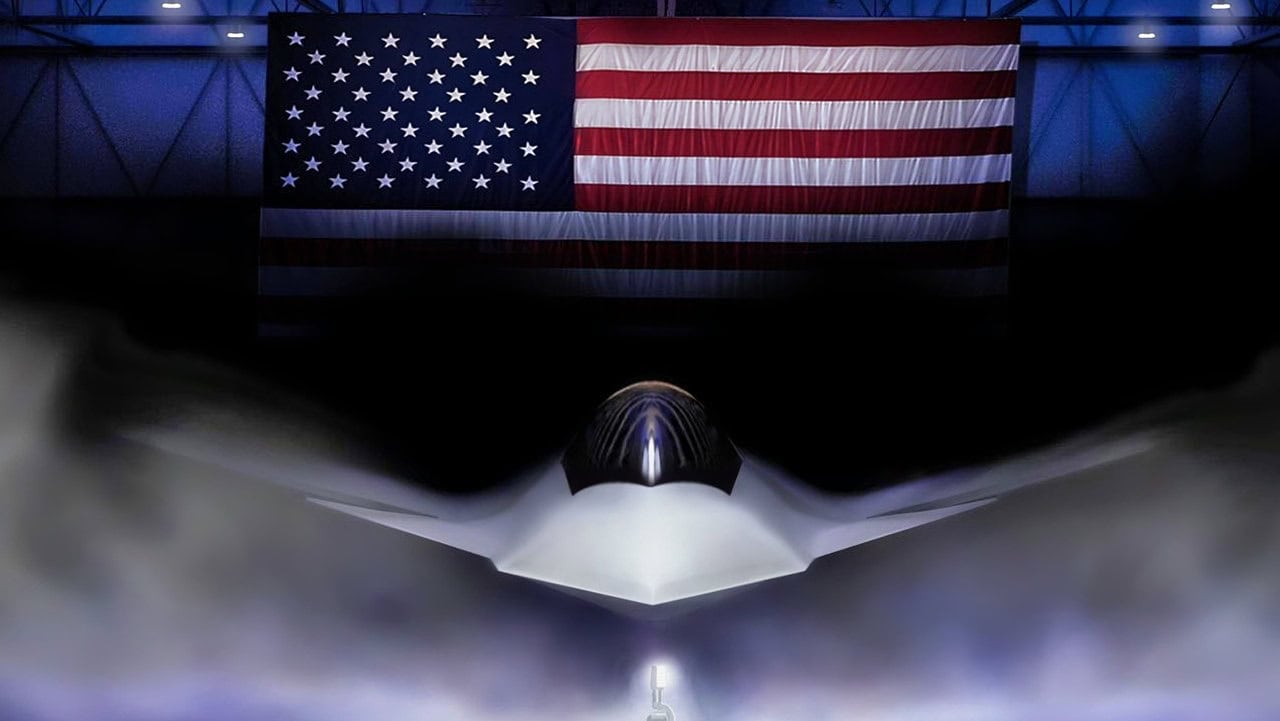F-47 Fighter Is Born: In a March 21st Oval Office announcement that came the same week he was briefed on the program, US President Donald Trump awarded the US Air Force’s (USAF) Next-Generation Air Dominance (NGAD) program to Boeing.
The aircraft, which was designated F-47, has been in the works for years and will be a 6th-generation fighter to eventually replace the USAF’s F-22 Raptor, which was designed by Lockheed Martin (LM) more than 30 years ago.
This contract award comes shortly after Air Force Chief of Staff Gen. David W. Allvin briefed Trump on the NGAD and Vice Chief of Naval Operations Adm. James Kilby on the US Navy F/A-XX program.
The F-47 Fighter Is Important
Trump announced the F-47 at the White House, along with Defense Secretary Pete Hegseth, Gen. Allvin, and Lt. Gen. Dale R. White, military deputy to the Assistant Secretary of the Air Force for Acquisition, Technology, and Logistics.
Boeing’s Phantom Works and the famous Lockheed Martin Skunk Works divisions were the sole competitors for the engineering and manufacturing development (EMD) contract for the NGAD.
This effort, which is just to develop the final aircraft configuration and does not involve the next phase, which would be for the production of the aircraft, will be worth at least $20 billion.
As one long-time analyst of USAF stealth programs explained to 19FortyFive, “the developmental phases of a program like this that involve such cutting-edge technologies almost always end up behind schedule and over budget. Look for that $20 billion figure to get larger.”
F-47 NGAD: A New Age Platform
NGAD is designed to be more than just a new-age fighter.
It is also envisioned as the ultimate battlespace management platform.
The concept for the aircraft is it would be capable of receiving and processing information from multiple off-board sensor inputs.
This would include data delivered directly into the cockpit from overhead satellites.
The pilot can then hand off battlespace information to other platforms or installations and units on the ground.
During the announcement Gen. Allvin also emphasized how important the “AD” in NGAD is to the program.
“Air dominance is not a birthright, but it has become synonymous with American air power,” he stated. This program is “our commitment to the fight.”
“Compared to the F-22, the F-47 will cost less and be more adaptable to future threats—and we will have more of the F-47s in our inventory,” Allvin said in a statement.
“The F-47 will have significantly longer range, more advanced stealth, be more sustainable, supportable, and have higher availability than our fifth-generation fighters. This platform is designed with a ‘built to adapt’ mindset and will take significantly less manpower and infrastructure to deploy.”
F-47: The Drone Quarterback
But, in addition to acting like a modern-day, stealthy one-man airborne early warning and control system aircraft – a smaller version of the Boeing E-7 Wedgetail – the NGAD is also designed to command a small flotilla of unmanned combat-capable drones.
These smaller, unmanned fighters are known as Collaborative Combat Aircraft (CCA) and are sometimes referred to as “Loyal Wingmen.”
Earlier this month, it was announced that two CCA designs are under development by two firms well-known for this type of aircraft – General Atomics and Anduril.
The two vehicles will be designated as YFQ-42A and YFQ-44A, giving the prototypes the same “Y” prefix designation that is standard for any developmental platform. They will also be the first to receive the prefix “FQ” that is now official military parlance for an unmanned air vehicle.
The U.S. Navy Wants Its Own 6th Generation Fighter
The US Navy intends to award a contract for its 6th-generation, carrier-capable fighter, the F/A-XX, in the coming months.
This aircraft is a distinctly separate design and will presumably not be built by the same contractor as the NGAD.
“No one wants there to be another program like the F-35,” said more than one naval aviator who spoke to 19FortyFive.
“So, F/A-XX will likely be built be some company that is not Boeing. Building one basic design for three very different missions turned out to be a bad solution for all parties involved,” is the general sentiment in this community.
Earlier this month, it was reported that LM had been eliminated from the bidding on the Navy program. This led many to the conclusion that the Bethesda, Maryland-based defense giant was a shoo-in for the NGAD program and that the Navy program would go to Boeing.
That assumption is now all “turned upside down” said one aerospace consultant close to the NGAD effort. With Boeing now the NGAD contractor and with Northrop left alone as the one company that F/A-XX could be awarded to, it “leaves LM out of the next-generation fighter game.”
It is going to be “interesting to see what use – if any – is made of LM’s decades of experience in designing stealthy aircraft,” the consultant said. “It is a lot of know-how to just be left lying by the side of the road.”
About the Author: Reuben F. Johnson
Reuben F. Johnson is a survivor of the February 2022 Russian invasion of Ukraine and is now an Expert on Foreign Military Affairs with the Fundacja im. Kazimierza Pułaskiego in Warsaw. He has been a consultant to the Pentagon, several NATO governments and the Australian government in the fields of defense technology and weapon systems design. Over the past 30 years he has resided in and reported from Russia, Ukraine, Poland, Brazil, the People’s Republic of China and Australia.

